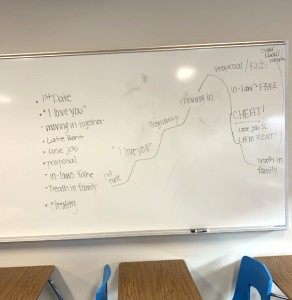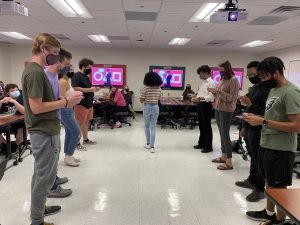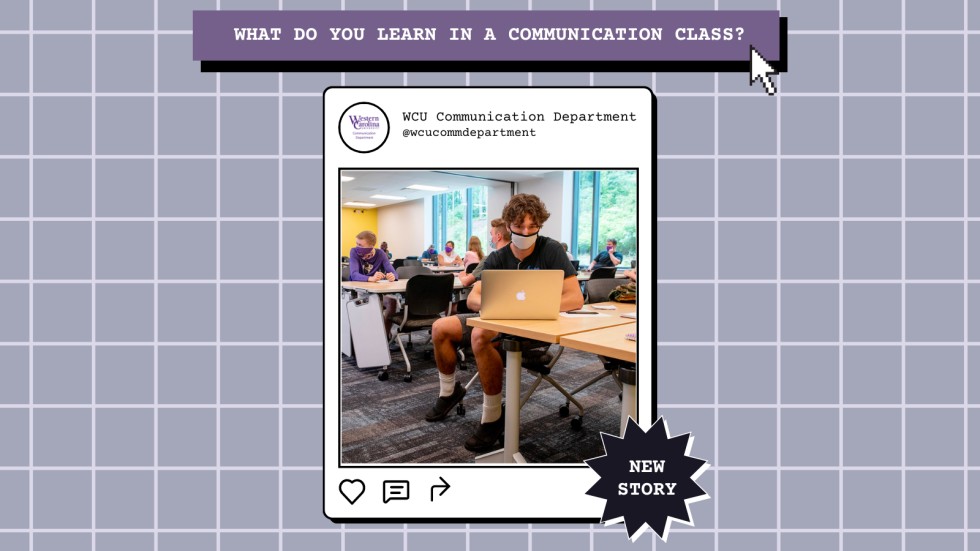Communications class: Unlock essential expertise and skills through communications training. Discover benefits. Explore resources available at LEARNS.EDU.VN. Elevate interpersonal communication, professional growth, and academic pursuits.
Are you wondering what you learn in a communications class? At LEARNS.EDU.VN, we understand that effective communication is the cornerstone of success in nearly every aspect of life. Communications training equips you with vital skills applicable across numerous fields and personal interactions. You’ll discover that exploring communications principles can significantly improve your interpersonal skills, professional relationships, and overall academic performance. Dive into communications studies for a transformative learning journey.
1. Understanding the Foundations of Communication
A foundational communications class introduces the key principles and theories that underpin all forms of communication. This includes verbal and non-verbal communication, understanding different communication models, and recognizing the importance of context in communication.
1.1 Core Communication Theories
You will learn about essential communication theories that help explain how communication works in different settings. These theories provide a framework for understanding complex communication processes.
- Linear Model: This model describes communication as a one-way process where a sender transmits a message to a receiver.
- Interactional Model: This model adds feedback to the linear model, recognizing that communication is a two-way process with continuous interaction between sender and receiver.
- Transactional Model: This advanced model views communication as a simultaneous process where participants are both senders and receivers, constantly exchanging messages and creating meaning together.
1.2 Verbal and Non-Verbal Communication
Understanding both verbal and non-verbal communication is critical. Verbal communication involves the use of words, while non-verbal communication includes body language, facial expressions, and tone of voice.
| Aspect | Verbal Communication | Non-Verbal Communication |
|---|---|---|
| Definition | Use of words to convey messages | Use of body language, tone, and expressions to convey messages |
| Key Components | Language, vocabulary, grammar | Facial expressions, gestures, posture, tone of voice |
| Importance | Conveys explicit information | Conveys emotions, attitudes, and implicit meanings |
| Potential Issues | Misunderstandings due to word choice or translation | Misinterpretations due to cultural differences or lack of awareness |




1.3 The Significance of Context
The context in which communication occurs plays a crucial role in how messages are interpreted. Context includes the cultural, social, and physical environment.
- Cultural Context: Cultural norms and values influence how messages are sent and received. Understanding these differences can prevent misunderstandings and promote effective communication.
- Social Context: The social environment, including relationships and social hierarchies, affects communication styles and expectations.
- Physical Context: The physical setting can impact the type and effectiveness of communication. For example, a formal boardroom setting will require a different communication style than a casual coffee shop.
2. Developing Interpersonal Communication Skills
Interpersonal communication skills are essential for building and maintaining relationships. These skills include active listening, empathy, and conflict resolution.
2.1 Active Listening Techniques
Active listening is more than just hearing what someone says; it involves fully concentrating, understanding, responding, and remembering what is being said.
- Pay Attention: Give the speaker your undivided attention and acknowledge the message.
- Show That You’re Listening: Use non-verbal cues such as nodding and eye contact to show you are engaged.
- Provide Feedback: Offer verbal and non-verbal feedback to clarify understanding.
- Defer Judgment: Avoid interrupting or imposing your opinions.
- Respond Appropriately: Respond in a way that shows you understand the speaker’s perspective.
2.2 Building Empathy
Empathy is the ability to understand and share the feelings of another person. It is a critical component of effective interpersonal communication.
- Perspective-Taking: Try to see the situation from the other person’s point of view.
- Emotional Recognition: Identify and understand the emotions the other person is experiencing.
- Compassionate Response: Respond in a caring and supportive manner.
2.3 Conflict Resolution Strategies
Conflict is a natural part of any relationship. Learning how to resolve conflicts constructively is crucial for maintaining healthy relationships.
| Strategy | Description |
|---|---|
| Identify the Issue | Clearly define the problem and understand the underlying issues causing the conflict. |
| Active Listening | Listen to all parties involved to understand their perspectives and feelings. |
| Finding Common Ground | Look for areas of agreement and shared goals to build a foundation for resolution. |
| Brainstorm Solutions | Generate a list of possible solutions without judging them initially. |
| Evaluate Options | Assess each solution to determine its feasibility and potential impact. |
| Choose a Solution | Select the solution that best addresses the needs of all parties involved. |
| Implement and Review | Put the solution into action and monitor its effectiveness. Be prepared to make adjustments as needed. |
3. Enhancing Public Speaking Skills
Public speaking is a valuable skill that can enhance your confidence and ability to communicate effectively in front of an audience. A communications class will provide you with the tools and techniques to become a more effective speaker.
3.1 Structuring a Speech
A well-structured speech is easier for the audience to follow and understand. The basic structure of a speech includes an introduction, body, and conclusion.
- Introduction: Grab the audience’s attention, introduce the topic, and state your thesis.
- Body: Present your main points with supporting evidence and examples.
- Conclusion: Summarize your main points and leave the audience with a memorable takeaway.
3.2 Delivery Techniques
Effective delivery can significantly impact the success of your speech. Key delivery techniques include:
- Eye Contact: Maintain eye contact with the audience to build rapport and keep them engaged.
- Vocal Variety: Vary your tone, pitch, and pace to keep the audience interested.
- Body Language: Use gestures and movement to emphasize your points and convey confidence.
- Practice: Rehearse your speech to ensure a smooth and confident delivery.
3.3 Managing Speech Anxiety
Speech anxiety is a common fear, but there are strategies you can use to manage it.
| Technique | Description |
|---|---|
| Preparation | Thoroughly research your topic and practice your speech to build confidence. |
| Positive Self-Talk | Replace negative thoughts with positive affirmations to boost your self-esteem. |
| Visualization | Imagine yourself giving a successful speech to reduce anxiety and build confidence. |
| Deep Breathing | Use deep breathing exercises to calm your nerves and reduce physical symptoms of anxiety. |
| Focus on the Audience | Shift your focus from your anxiety to your message and the audience to create a connection and reduce self-consciousness. |
4. Mastering Written Communication
Written communication skills are essential in academic and professional settings. A communications class will help you improve your writing clarity, grammar, and style.
4.1 Clarity and Conciseness
Clear and concise writing is easy to understand and avoids unnecessary jargon or complexity.
- Use Simple Language: Choose words that are easy to understand and avoid using overly technical or complex terms.
- Be Direct: Get straight to the point and avoid unnecessary preamble or filler.
- Organize Your Thoughts: Structure your writing logically to ensure clarity and coherence.
- Edit Ruthlessly: Review your writing and cut out any unnecessary words or phrases.
4.2 Grammar and Style
Correct grammar and appropriate style are essential for creating professional and credible written communication.
- Grammar Rules: Follow standard grammar rules to ensure your writing is error-free.
- Style Guides: Adhere to a consistent style guide (e.g., APA, MLA, Chicago) to maintain uniformity and credibility.
- Tone: Adjust your tone to suit your audience and purpose.
4.3 Writing for Different Mediums
Different mediums require different writing styles. Understanding these differences is crucial for effective communication.
| Medium | Style | Examples |
|---|---|---|
| Concise, professional, and direct. Use a clear subject line and appropriate greeting and closing. | Business correspondence, internal communications | |
| Reports | Formal, structured, and data-driven. Use headings, subheadings, and visuals to present information clearly. | Research reports, financial reports, project updates |
| Social Media | Engaging, informal, and visually appealing. Use short sentences, hashtags, and images to capture attention. | Marketing campaigns, community engagement, brand awareness |
5. Understanding Group Communication Dynamics
Group communication dynamics are crucial for effective teamwork and collaboration. A communications class will help you understand how groups function and how to contribute effectively to group projects.
5.1 Roles in Group Communication
Understanding the different roles individuals play in a group can help improve group dynamics and productivity.
- Leader: Guides the group and facilitates decision-making.
- Facilitator: Ensures the group stays on track and manages discussions.
- Recorder: Takes notes and documents group decisions.
- Devil’s Advocate: Challenges ideas and encourages critical thinking.
- Harmonizer: Mediates conflicts and promotes a positive group environment.
5.2 Improving Group Decision-Making
Effective decision-making is essential for group success. Strategies for improving group decision-making include:
- Clearly Define the Problem: Ensure all group members understand the problem and the goals of the decision-making process.
- Brainstorm Solutions: Generate a wide range of potential solutions without evaluating them initially.
- Evaluate Options: Assess the pros and cons of each solution and consider its feasibility and impact.
- Reach Consensus: Aim for a solution that all group members can support, even if it’s not their first choice.
- Implement and Review: Put the decision into action and monitor its effectiveness. Be prepared to make adjustments as needed.
5.3 Managing Conflict in Groups
Conflict is inevitable in group settings, but it can be managed constructively.
| Strategy | Description |
|---|---|
| Active Listening | Allow each member to express their point of view without interruption. |
| Identify Issues | Pinpoint the root causes of conflict to come up with an effective resolution. |
| Focus on Solutions | Keep members focused on reaching a compromise, and help them understand different ways of seeing a problem. |
| Compromise | Encourage group members to make an arrangement where each member is willing to negotiate in order to find a solution that is acceptable to everyone involved. |
| Mediation | Get an outsider to objectively help facilitate a discussion on different points of view and suggest solutions. |
6. Utilizing Technology in Communication
Technology plays a significant role in modern communication. A communications class will help you understand how to use various technologies effectively for communication purposes.
6.1 Social Media Strategies
Social media is a powerful tool for communication, but it must be used strategically.
- Audience Analysis: Understand your target audience and tailor your content to their interests.
- Content Creation: Create engaging and informative content that resonates with your audience.
- Platform Selection: Choose the right social media platforms for your communication goals.
- Engagement: Interact with your audience and respond to their comments and questions.
- Analytics: Track your social media performance and adjust your strategy accordingly.
6.2 Digital Communication Tools
There are many digital communication tools available, each with its own strengths and weaknesses.
| Tool | Description | Use Cases |
|---|---|---|
| Electronic mail for sending and receiving messages. | Business communication, formal correspondence, internal updates | |
| Instant Messaging | Real-time text-based communication. | Quick updates, informal discussions, team collaboration |
| Video Conferencing | Live video and audio communication for remote meetings and presentations. | Remote meetings, virtual presentations, online training |
| Project Management Software | Tools for organizing tasks, tracking progress, and facilitating collaboration on projects. | Project planning, task management, team collaboration |
| Social Media Platforms | Platforms for sharing content, engaging with audiences, and building online communities. | Marketing, public relations, customer engagement |
6.3 Online Presentation Skills
Online presentations require a different set of skills than in-person presentations.
- Technical Setup: Ensure your equipment (camera, microphone, internet connection) is working properly.
- Visual Aids: Use clear and engaging visuals to keep your audience interested.
- Engagement Techniques: Use interactive elements (polls, Q&A) to keep your audience involved.
- Eye Contact: Look directly at the camera to simulate eye contact with your audience.
- Practice: Rehearse your presentation to ensure a smooth and confident delivery.
7. Ethical Considerations in Communication
Ethical communication is honest, fair, and respectful. A communications class will help you understand the ethical implications of communication and how to communicate ethically.
7.1 Honesty and Transparency
Honesty and transparency are essential for building trust and credibility.
- Accurate Information: Provide accurate and truthful information.
- Disclose Biases: Be transparent about your biases and potential conflicts of interest.
- Avoid Deception: Do not use deception or manipulation to achieve your communication goals.
7.2 Respect for Diversity
Respecting diversity is crucial for creating inclusive and equitable communication environments.
- Cultural Sensitivity: Be aware of cultural differences and avoid making assumptions or stereotypes.
- Inclusive Language: Use language that is respectful and inclusive of all individuals.
- Accessibility: Ensure your communication is accessible to individuals with disabilities.
7.3 Privacy and Confidentiality
Respecting privacy and maintaining confidentiality are essential ethical obligations.
- Obtain Consent: Obtain consent before sharing personal information.
- Protect Confidential Information: Safeguard confidential information and avoid unauthorized disclosure.
- Comply with Regulations: Adhere to privacy regulations and policies.
8. Applying Communication Theories in Real-World Scenarios
Applying communication theories in real-world scenarios can help you understand and improve your communication effectiveness.
8.1 Case Studies
Analyzing case studies can provide valuable insights into how communication theories work in practice.
- Organizational Communication: Examine how communication theories apply to workplace dynamics, leadership styles, and organizational culture.
- Crisis Communication: Analyze how organizations manage communication during crises and how they use communication strategies to mitigate damage.
- Political Communication: Study how political campaigns use communication theories to influence voters and shape public opinion.
8.2 Role-Playing Exercises
Role-playing exercises allow you to practice applying communication theories in a safe and controlled environment.
- Negotiation Scenarios: Practice negotiation skills and apply communication theories to achieve mutually beneficial outcomes.
- Conflict Resolution Simulations: Simulate conflict situations and practice using conflict resolution strategies.
- Public Speaking Events: Present speeches and receive feedback on your delivery and content.
8.3 Real-World Projects
Engaging in real-world projects can provide valuable experience and help you apply communication theories in a practical setting.
- Community Engagement Projects: Work with local organizations to develop communication strategies and implement communication campaigns.
- Internships: Gain practical experience in communication roles and apply communication theories in a professional setting.
- Research Projects: Conduct research on communication topics and apply communication theories to analyze data and draw conclusions.
9. Career Opportunities with Communication Skills
Strong communication skills are highly valued in many industries, opening up a wide range of career opportunities.
9.1 Public Relations
Public relations professionals manage communication between an organization and its publics.
- Responsibilities: Developing and implementing communication strategies, writing press releases, organizing events, managing social media, and handling media inquiries.
- Required Skills: Excellent writing and speaking skills, strong interpersonal skills, creativity, and the ability to work under pressure.
9.2 Marketing
Marketing professionals use communication to promote products and services.
- Responsibilities: Developing marketing campaigns, creating marketing materials, managing social media, conducting market research, and analyzing marketing data.
- Required Skills: Strong writing and communication skills, creativity, analytical skills, and a good understanding of marketing principles.
9.3 Human Resources
Human resources professionals manage communication between an organization and its employees.
- Responsibilities: Recruiting and hiring employees, developing training programs, managing employee relations, and communicating company policies.
- Required Skills: Strong interpersonal skills, excellent communication skills, empathy, and knowledge of employment law.
9.4 Journalism
Journalists gather and report news to the public.
- Responsibilities: Researching and writing news articles, conducting interviews, investigating stories, and presenting news in a clear and accurate manner.
- Required Skills: Excellent writing and reporting skills, strong research skills, critical thinking skills, and a commitment to ethical journalism.
10. Staying Current with Communication Trends
The field of communication is constantly evolving. Staying current with communication trends is essential for maintaining your communication effectiveness.
10.1 Continuous Learning
Continuous learning is crucial for staying ahead in the field of communication.
- Professional Development Courses: Take courses to develop new skills and enhance your knowledge.
- Conferences and Workshops: Attend conferences and workshops to learn from experts and network with peers.
- Industry Publications: Read industry publications to stay informed about the latest trends and best practices.
- Online Communities: Participate in online communities and forums to exchange ideas and learn from others.
10.2 Adapting to New Technologies
New technologies are constantly emerging, and it’s important to be able to adapt to them.
- Experiment with New Tools: Try out new communication tools and platforms to see how they can enhance your communication effectiveness.
- Stay Informed: Keep up with the latest technology trends and developments.
- Seek Training: Take training courses to learn how to use new technologies effectively.
10.3 Networking
Networking is essential for staying connected and learning about new opportunities.
- Attend Industry Events: Attend industry events to meet new people and learn about new developments.
- Join Professional Organizations: Join professional organizations to connect with peers and access resources.
- Use Social Media: Use social media to connect with professionals in your field and stay informed about industry news.
- Attend virtual workshops: Online platforms such as LEARNS.EDU.VN have virtual workshops available to network and build communication skills.
| Trend | Description | Resources |
|---|---|---|
| AI in Communication | Artificial intelligence is being used to automate tasks, personalize content, and analyze communication data. | AI-powered communication tools, AI in marketing conferences |
| Remote Communication | With the rise of remote work, effective remote communication skills are more important than ever. | Online collaboration tools, virtual team management courses |
| Data-Driven Communication | Data analytics is being used to measure the effectiveness of communication campaigns and optimize communication strategies. | Data analytics courses, marketing analytics platforms |
| Virtual Reality (VR) Communication | Using VR to deliver immersive training and communication, especially in high-stakes situations. | VR Development Courses, VR Communication Platforms |
In conclusion, communications classes offer a wealth of knowledge and skills that are valuable in both personal and professional life. From understanding core communication theories to mastering public speaking, written communication, and group dynamics, these classes provide the tools you need to become an effective communicator. With ethical communication at the forefront, these skills can lead to a wide range of career opportunities and help you stay current with the latest communication trends.
Are you ready to unlock your full potential and transform your communication skills? Visit LEARNS.EDU.VN today and explore our comprehensive range of courses and resources designed to help you excel. Whether you’re aiming to improve your interpersonal relationships, advance your career, or simply become a more confident and articulate communicator, LEARNS.EDU.VN offers the tools and guidance you need.
Don’t miss out on the opportunity to enhance your skills with learns.edu.vn. Contact us today at 123 Education Way, Learnville, CA 90210, United States, or via WhatsApp at +1 555-555-1212. Start your journey towards becoming an exceptional communicator now!
FAQ: What Do You Learn in a Communications Class?
- What are the main topics covered in a communications class?
Communications classes typically cover a range of topics, including communication theories, interpersonal communication, public speaking, written communication, group dynamics, and ethical considerations in communication. - How can a communications class improve my interpersonal skills?
Communications classes teach active listening techniques, empathy-building strategies, and conflict resolution methods, which are essential for improving your interpersonal relationships. - What are the benefits of taking a public speaking course?
A public speaking course can help you structure your speeches, improve your delivery techniques, manage speech anxiety, and enhance your overall confidence in public speaking situations. - How important is written communication in today’s world?
Written communication is extremely important in both academic and professional settings. A communications class can help you improve your writing clarity, grammar, and style, making you a more effective communicator. - What is the role of technology in communication classes?
Technology plays a significant role in modern communication. Communications classes teach you how to use social media strategically, utilize digital communication tools effectively, and enhance your online presentation skills. - Why is it important to understand group communication dynamics?
Understanding group communication dynamics is crucial for effective teamwork and collaboration. A communications class helps you understand different roles in group communication, improve group decision-making, and manage conflict in groups. - What are the ethical considerations in communication?
Ethical communication involves honesty, transparency, respect for diversity, and privacy. A communications class will help you understand the ethical implications of communication and how to communicate ethically. - Can communication theories be applied in real-world scenarios?
Yes, communication theories can be applied in various real-world scenarios, such as organizational communication, crisis communication, and political communication. Case studies, role-playing exercises, and real-world projects can help you apply these theories effectively. - What are some career opportunities that require strong communication skills?
Strong communication skills are highly valued in many industries, including public relations, marketing, human resources, journalism, and more. - How can I stay current with communication trends?
To stay current with communication trends, engage in continuous learning, adapt to new technologies, and network with professionals in the field. Consider resources such as professional development courses, industry publications, and online communities.
